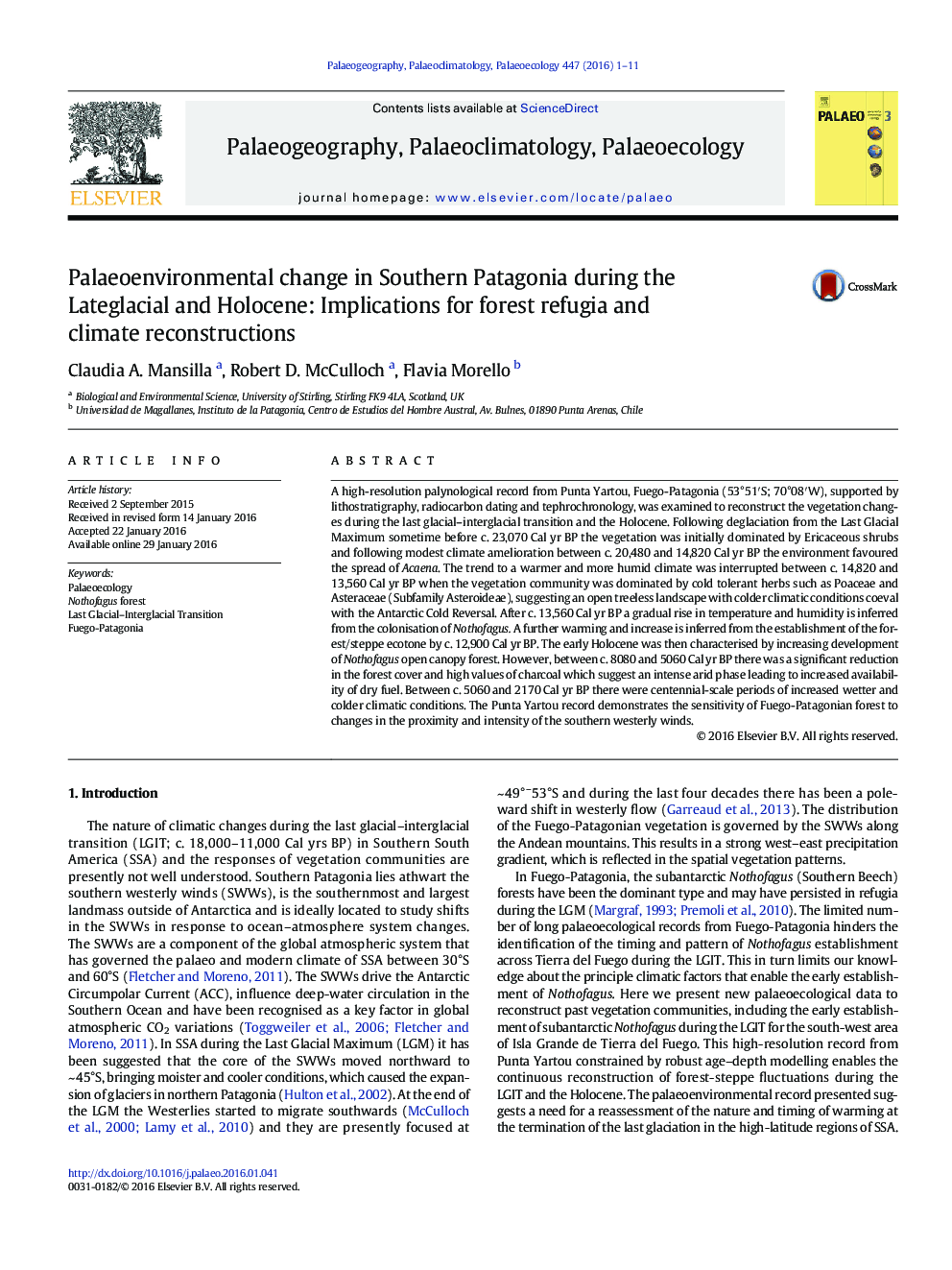| Article ID | Journal | Published Year | Pages | File Type |
|---|---|---|---|---|
| 4465791 | Palaeogeography, Palaeoclimatology, Palaeoecology | 2016 | 11 Pages |
•Reconstruction of palaeoenvironmental change for Tierra del Fuego from the last c. 23–0.8 ka.•Ecological response to cooling during the Antarctic Cold Reversal between c. 14.8–12.9 ka.•Early establishment of southern beech (Nothofagus) between c. 12.9–12.6 ka.•Extending the use of Patagonian cryptotephras to support the radiocarbon dating of peat and sediment profiles.•Lateglacial and Holocene migration of the Southern Westerly Winds is inferred from the vegetation and sediment record.
A high-resolution palynological record from Punta Yartou, Fuego-Patagonia (53°51′S; 70°08′W), supported by lithostratigraphy, radiocarbon dating and tephrochronology, was examined to reconstruct the vegetation changes during the last glacial–interglacial transition and the Holocene. Following deglaciation from the Last Glacial Maximum sometime before c. 23,070 Cal yr BP the vegetation was initially dominated by Ericaceous shrubs and following modest climate amelioration between c. 20,480 and 14,820 Cal yr BP the environment favoured the spread of Acaena. The trend to a warmer and more humid climate was interrupted between c. 14,820 and 13,560 Cal yr BP when the vegetation community was dominated by cold tolerant herbs such as Poaceae and Asteraceae (Subfamily Asteroideae), suggesting an open treeless landscape with colder climatic conditions coeval with the Antarctic Cold Reversal. After c. 13,560 Cal yr BP a gradual rise in temperature and humidity is inferred from the colonisation of Nothofagus. A further warming and increase is inferred from the establishment of the forest/steppe ecotone by c. 12,900 Cal yr BP. The early Holocene was then characterised by increasing development of Nothofagus open canopy forest. However, between c. 8080 and 5060 Cal yr BP there was a significant reduction in the forest cover and high values of charcoal which suggest an intense arid phase leading to increased availability of dry fuel. Between c. 5060 and 2170 Cal yr BP there were centennial-scale periods of increased wetter and colder climatic conditions. The Punta Yartou record demonstrates the sensitivity of Fuego-Patagonian forest to changes in the proximity and intensity of the southern westerly winds.
